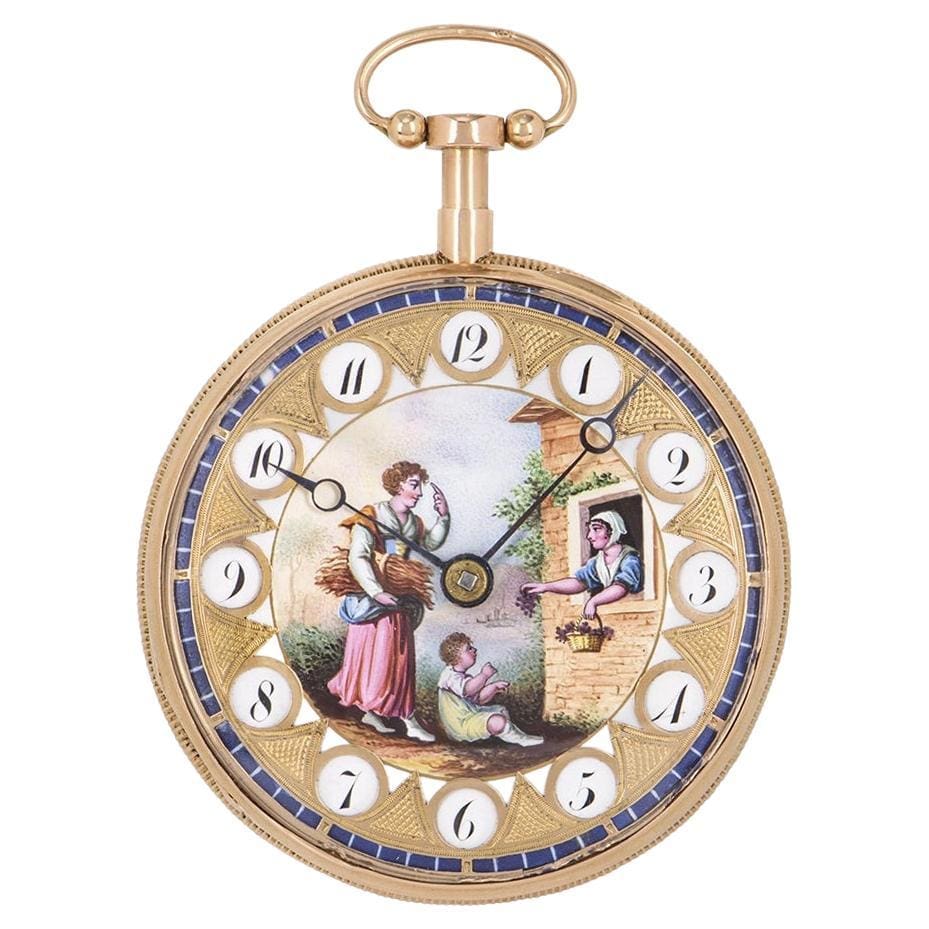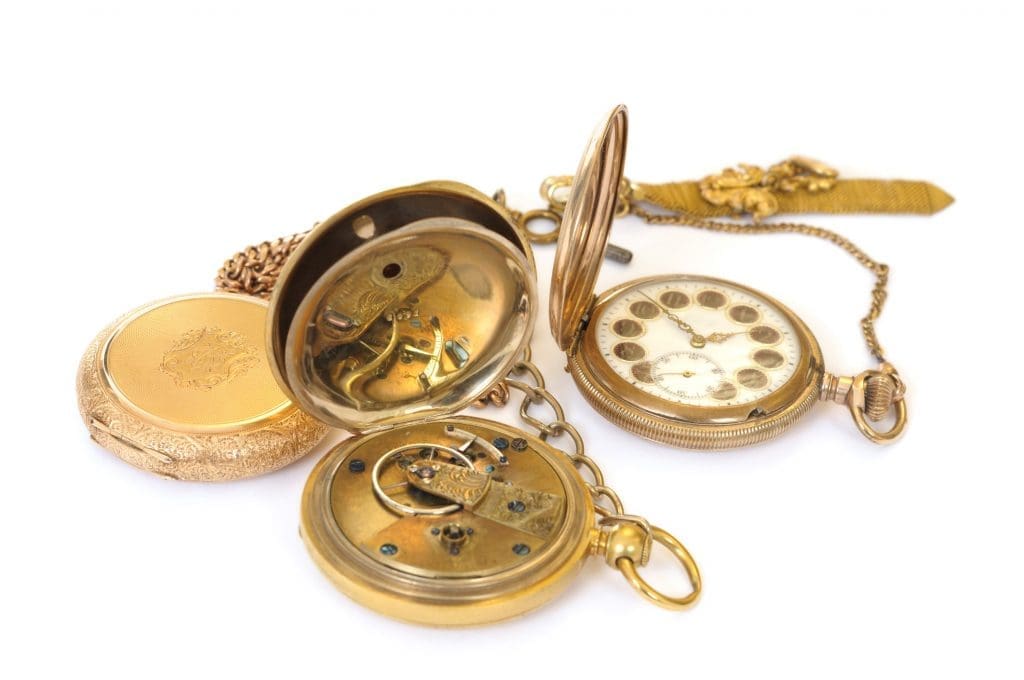If you’re a watch enthusiast, you may be wondering whether to start collecting antique pocket watches or vintage wrist watches. While both types of timepieces have their own unique charm and value, there are several reasons why you should consider collecting antique pocket watches.
The Charm of Antique Pocket Watches
Antique pocket watches have a unique charm that cannot be replicated by vintage wrist watches. These timepieces were designed to be carried in a pocket and were often ornate and decorative, featuring intricate designs that were not feasible with wrist watches.
One of the most charming features of antique pocket watches is their intricate designs, such as engravings and filigree work. These designs were often handcrafted by skilled artisans using traditional techniques, adding to their charm and value.
Antique pocket watches were also made to last, with many models featuring durable materials like gold, silver, or brass. These watches are a testament to the craftsmanship of a bygone era, and owning one offers a unique connection to the past.

Why Antique Pocket Watches are Worth Collecting
Antique pocket watches are rare and unique, making them highly sought after by collectors. Unlike vintage wrist watches, antique pocket watches have a history and legacy that cannot be replicated. Collecting antique pocket watches can be a smart investment, as their value tends to appreciate over time. Additionally, owning a collection of antique pocket watches offers a glimpse into history and craftsmanship, as well as a sense of nostalgia.
- Antique pocket watches are rare and unique
- Collecting antique pocket watches can be a smart investment
- Owning a collection of antique pocket watches offers a glimpse into history and craftsmanship
Antique pocket watches are often considered heirloom pieces that can be passed down through generations, making them a worthwhile addition to any collection. Their rarity and unique designs make them a conversation starter and a tangible piece of history that can be cherished for years to come.
How to Identify Authentic Antique Pocket Watches
When collecting antique pocket watches, it’s important to know how to verify their authenticity to avoid purchasing fake or replica pieces. Here are some tips on how to identify authentic antique pocket watches:
Look for Hallmarks or Maker’s Marks
Many antique pocket watches have hallmarks or maker’s marks stamped on them, which can indicate their authenticity and value. These marks can include the name of the maker, the year the watch was made, and the type of metal used. Look for these marks on the case, dial, and movement of the watch.
Check the Serial Number
The serial number on an antique pocket watch can reveal important information about the maker and model of the watch. Research the maker and model to verify that the serial number is consistent with known information. Be aware that some makers reused serial numbers on different models or movements.
Examine the Case, Dial, and Movement
Inspect the case, dial, and movement of the watch for signs of wear and repair. Scratches, dents, and other damage can affect the value of the watch. Look for signs of repair, such as solder marks or replaced parts, which can also decrease the value and authenticity of the watch. Also, check for any loose or missing screws or parts.
By following these tips, you can confidently identify and purchase authentic antique pocket watches for your collection.

The History of Antique Pocket Watches
Pocket watches have been around since the 16th century and were often considered a symbol of status and wealth. Originally invented in the 1500s, pocket watches were first known as “Nuremberg eggs” due to their rounded shape. They were often worn on chains and kept in the pocket of the wearer, hence the name pocket watch.
Antique pocket watches were popular during the Victorian era (1837-1901) and were often given as gifts to mark special occasions. They were prized for their intricate designs and became a true fashion accessory in the latter part of the 19th century. During this time, pocket watches also became more affordable to the general public thanks to the Industrial Revolution, which made production cheaper and more efficient.
As technology advanced, so did the pocket watch. In the late 19th century, watchmakers began introducing more features in their timepieces, including chronographs, minute repeaters, and moon phases. These complications made the watches more valuable and sought after, as well as allowed the wearer to track time more accurately.
By the early 20th century, wristwatches began to overtake pocket watches in popularity. With World War I, soldiers needed a more practical timepiece that would allow them to keep track of time while in combat. Wristwatches provided a more convenient option, and their popularity grew quickly after the war. However, antique pocket watches continue to be cherished by collectors and lovers of history and craftsmanship to this day.
Antique vs Vintage: Which is Better for Collectors?
When it comes to collecting watches, there is often a debate between antique and vintage pieces. Antique pocket watches are generally considered to be those made before the 20th century, while vintage wrist watches can be from any time period, but are often from the mid-20th century.
Here are some factors to consider when deciding whether to collect antique pocket watches or vintage wrist watches:
- Age: Antique pocket watches are generally older than vintage wrist watches, which can make them more rare and valuable.
- Craftsmanship: Antique pocket watches were often made by skilled craftsmen using traditional techniques, which can make them highly valued by collectors interested in history and craftsmanship.
- Type: Antique pocket watches are typically pocket watches, while vintage wrist watches can come in a variety of styles, including dress watches, sports watches, and chronographs.
- Popularity: Vintage wrist watches are often more popular among younger collectors, while antique pocket watches appeal to those interested in history and craftsmanship.
- Rarity: Antique pocket watches are generally rarer than vintage wrist watches, which can make them more valuable to collectors.
Ultimately, the decision of whether to collect antique pocket watches or vintage wrist watches comes down to personal preference. Both types of watches have their own unique charms and value, and collectors should choose based on what they find most appealing and interesting.
The Value of Antique Pocket Watches: A Look at the Market
Antique pocket watches are highly valued by collectors around the world, and their prices can vary greatly depending on several factors. Here are some key things to know about the market for antique pocket watches:
Factors Affecting Value
- Rarity: The fewer examples of a particular watch that exist, the more valuable it is likely to be.
- Brand: Watches from well-known and respected makers, such as Patek Philippe or Vacheron Constantin, tend to be more valuable.
- Condition: Watches that are in excellent condition and still functional will generally command higher prices.
- Provenance: Watches with a known history of ownership, particularly if they belonged to a famous or historically significant person, can significantly increase their value.
Price Range
The prices of antique pocket watches can range from a few hundred dollars to several thousand dollars or more. Generally speaking, watches from the 19th century and earlier tend to be more valuable than those from the early 20th century, though there are exceptions.
Market Trends
The market for antique pocket watches has remained relatively stable over the past few decades. However, prices have continued to rise as more people become interested in collecting these unique and historic timepieces. And while some watches are always in demand, tastes and preferences can shift over time, meaning that the value of certain watches can rise or fall.
Investing in Antique Pocket Watches
Collecting antique pocket watches can be a worthwhile investment for those who have a passion for these unique timepieces. However, it’s important to do your research to ensure that you’re making informed purchases. Buying from reputable dealers and attending auctions or trade shows can be good ways to find high-quality pieces at fair prices.
Tip: If you’re just getting started, consider seeking the advice of experienced collectors or watchmakers who can offer guidance on what to look for and what to avoid.
Caring for Your Antique Pocket Watch: Maintenance Tips
Antique pocket watches require special care and attention to keep them in good working condition. Here are some maintenance tips to help preserve the beauty and value of your antique pocket watch:
Keep it in a Safe Place
Store your antique pocket watch in a cool, dry place away from direct sunlight, moisture, and extreme temperatures. Exposure to these elements can cause damage or fading to the watch.
Handle with Care
Handle your antique pocket watch with care, using soft cloths and avoiding touching the dial or movement with your fingers. Only wind the watch using a special key or by gently turning the crown to avoid over-winding or damaging the movement.
Clean Regularly
Clean your antique pocket watch regularly using a soft, dry cloth to remove dust and debris. Avoid using water or cleaning solutions as they can damage the movement and other delicate parts of the watch.
Service by a Professional
Have your antique pocket watch serviced by a professional watchmaker every few years to ensure it is in good working condition. A watchmaker can clean, oil, and adjust the movement and other parts of the watch to keep it running smoothly.
Store Properly
When not in use, store your antique pocket watch in a protective case or pouch to prevent scratches, dust, and debris from accumulating on the watch. This will also prevent the watch from getting tangled or damaged due to other objects in the storage area.
By following these simple maintenance tips, you can ensure that your antique pocket watch remains in excellent condition and retains its value and beauty for years to come.
The Different Styles of Antique Pocket Watches
Antique pocket watches come in a wide variety of styles, each with its own unique charm and history. Here are some of the most popular styles to look for:
- Open-Face: This style of pocket watch has a simple, elegant design with the face of the watch exposed. The absence of a cover makes it easy to read the time at a glance.
- Hunter-Case: Hunter-case pocket watches have a cover that closes over the face of the watch, protecting it from damage. The cover can be opened by pressing a button or a hinge.
- Half-Hunter-Case: Similar to hunter-case watches, half-hunter-case watches have a cover that closes over the face, but with a small window that allows the time to be read without opening the cover.
- Double Dial: Double-dial pocket watches have a second dial on the back of the watch, often used to show a different time zone or to display additional information such as the phases of the moon.
- Complications: Some antique pocket watches have additional features or complications, such as a stopwatch function or a calendar. These watches often command high prices due to their rarity and complexity.
Antique pocket watches can also feature intricate designs and engravings on the case and dial, adding to their beauty and value as collector’s items.
Building a Collection: Tips for Collecting Antique Pocket Watches
Collecting antique pocket watches can be a rewarding and fulfilling hobby, but it’s important to approach it with the right mindset and strategy. Here are some tips for building a collection of antique pocket watches:
1. Do Your Research
Before you start collecting antique pocket watches, it’s important to do your research and learn as much as you can about the market. This includes familiarizing yourself with different makes, models, and styles of antique pocket watches, as well as understanding what factors contribute to their value and rarity. You can learn a lot by reading books and articles about antique pocket watches, attending trade shows and auctions, and speaking to knowledgeable collectors and dealers.
2. Set a Budget
Antique pocket watches can range in price from a few hundred dollars to several thousand dollars, depending on a variety of factors. It’s important to set a budget for your collection and stick to it, so you don’t overspend or become overwhelmed by the cost. Remember that you don’t need to purchase the most expensive pieces to have a valuable and enjoyable collection.
3. Build Relationships with Reputable Dealers
Building relationships with reputable dealers can be a valuable asset when collecting antique pocket watches. Dealers can help you find unique and rare pieces, provide advice and guidance on collecting, and even assist with maintenance and repairs. Look for dealers who specialize in antique pocket watches and who have a good reputation in the collecting community.
4. Attend Auctions and Trade Shows
Auctions and trade shows can be a great way to find unique and rare antique pocket watches to add to your collection. These events bring together collectors and dealers from around the world, making it an excellent opportunity to network and learn more about the market. Be sure to research upcoming events in your area and make plans to attend.
5. Take Care of Your Collection
Once you’ve begun building your collection, it’s important to take care of it properly. This includes storing your antique pocket watches in a cool, dry place away from direct sunlight, handling them with care using soft cloths, and having them serviced by a professional watchmaker every few years to keep them in good working condition. With proper care, your collection can be enjoyed for many years to come.
By following these tips, you can build a valuable and enjoyable collection of antique pocket watches. Remember that collecting is a journey, and it’s important to enjoy the process and learn as much as you can along the way.
The Legacy of Antique Pocket Watches
Antique pocket watches have a rich history and legacy that is unlike any other timepiece. As symbols of craftsmanship, innovation, and status, these watches represent a bygone era that still captures the imaginations of collectors and enthusiasts today.
Collecting antique pocket watches allows for the preservation and celebration of this legacy. It allows us to understand, appreciate, and cherish the artistry of past generations, as well as the technological advancements that paved the way for modern watchmaking.
But the legacy of antique pocket watches goes beyond the mere appreciation of their beauty and history. It is also about carrying that appreciation forward and passing it down to future generations. By collecting antique pocket watches, we are not just acquiring a piece of jewelry, we are acquiring a piece of history that can be cherished and shared for years to come.
Whether you are a seasoned collector or a novice enthusiast, the legacy of antique pocket watches is something that can be shared by all who appreciate beauty, craftsmanship, and history.
Conclusion
In conclusion, collecting antique pocket watches can be a rewarding and valuable hobby for those interested in history, craftsmanship, and unique design. Antique pocket watches offer a glimpse into the past, and their rarity and beauty make them highly sought after by collectors. With proper care and maintenance, an antique pocket watch can be cherished for generations to come. Ultimately, whether you choose to collect antique pocket watches or vintage wrist watches, the joy of collecting and the appreciation of horology will remain.

